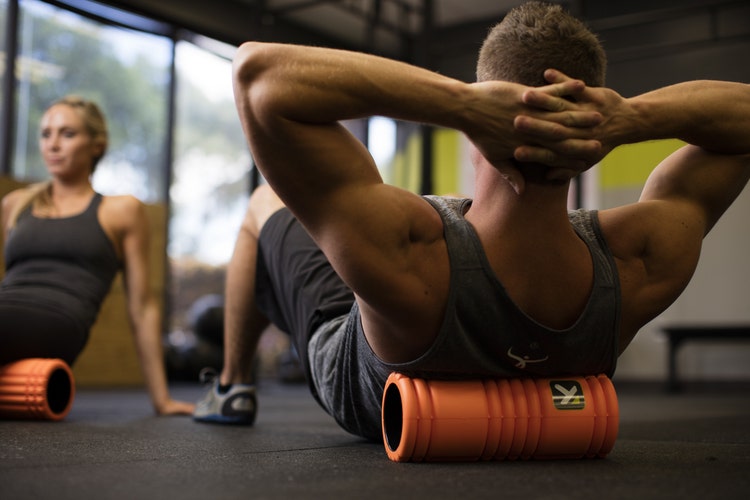10 Recovery Moves That Will Make You a Stronger Athlete

Recovery often sounds like a “dirty” word. What are you recovering from? A night out with friends? Surgery? A day in the office? And when it comes to fitness, what does recovery mean anyhow?
You can think of “recovery” as a time to remove what your body doesn’t need and provide what it does need. It’s not giving your body a break by slacking off, in fact, it’s “feeding” the body whatever it is lacking most, which could be water, protein, carbs or even different movements.
Wondering where to start? Below are 10 recovery “moves” that will give your body what it needs and make you a stronger athlete.
- Hydrate: Water is the fuel of life. Every metabolic process in the body must take place in the presence of water. If there is not enough water, then waste from muscle contractions cannot be flushed out, nutrients can’t be delivered in a timely fashion, and tissues such as muscles and fascia won’t have a frictionless environment where they can operate.
- Breathe: More important than just bringing in oxygen, breathing helps to remove carbon dioxide, which is one of the metabolic waste products mentioned in #1. In addition, big deep breaths will help to relax the body.
- Relax your mind: As every athlete is aware, at the elite level, the conditioning of the mind is as important as conditioning of the body. Make meditation practices a key part of every recovery, in which you let the mind do nothing. For those of who have not been trained in meditation this will be extremely challenging, so you can start by taking a class.
- Unstick stuck tissue: The repetitive motion of training (yes, biking and running are similar) can lead to certain areas of the body taking on more stress than others, over and over and over again. This is the making of an overuse injury. The muscles of the calves, thighs, hip flexors, glutes, upper back and chest take a beating during these motions, which often leaves the muscles dehydrated, short and stuck. Spend a few minutes foam rolling each of these muscles before and after training to increase blood-flow, rehydrate and reintroduce normal motion.
- Provide your body nutrients: This should be a given, but the body can’t recover if you don’t give it what it needs by eating a balanced diet on a daily basis, focused on whole foods. To determine what your body really needs, you can work with a Registered Dietician or Nutritionist, who can look at your overall diet and give recommendations to help you perform and recover optimally.
- Make sleep a priority: True recovery occurs during sleep. Deep sleep releases certain hormones to maximize the repair process, while poor sleep leads to inadequate recovery, physical and mental fatigue and decreased performance. That’s why you should plan your sleep the same way you plan your training. Set a time for bed and get there on time and focus on quality sleep. (Find out more about how to get quality sleep from expert Shawn Stevenson here.)
- Take an active “rest day”: The body is made to work, but the mind needs novelty. Take a “day off” by going for a hike, get some core work done with stand-up paddle boarding or perform a total-body foam rolling session. These different activities will allow the body the promote recovery by engaging muscles and releasing happy hormones, but more importantly, these activities will rejuvenate the mind.
- Move in a different direction: Change it up on a recovery day by moving, but not necessarily by moving forward. You can perform some easy lateral tube walks, some reverse tube walks, or play with rotational movements. Get your body comfortable utilizing all planes of motion.
- Take note of how you feel everyday: Make notes of aches, pains, things that feel great, your stress levels, hydration levels, quality of sleep, and relaxation time every day. Being cognizant of these little things will create the awareness to know when to train hard and when to plan that next recovery day.
- Make a recovery plan and stick to it: You already know a little bit about sticking to a plan. Make your recovery process a part of that plan and never skip it. Think of your recovery as preparing for whatever comes next. You’re doing a little prep work after each training session, every day, to make sure you’re able to get the most of the next training session.